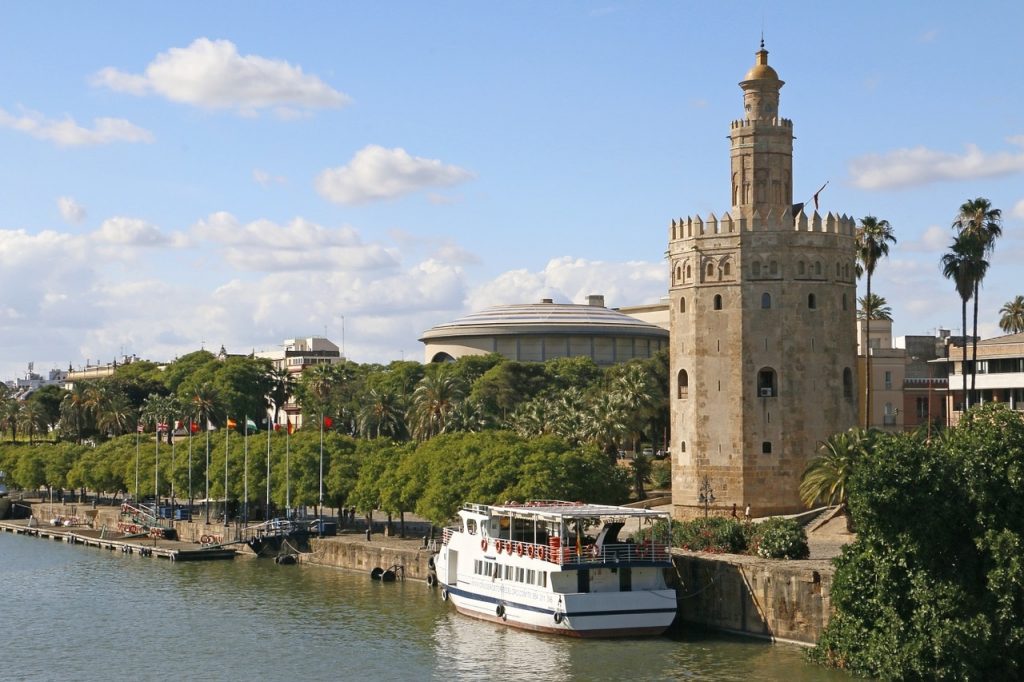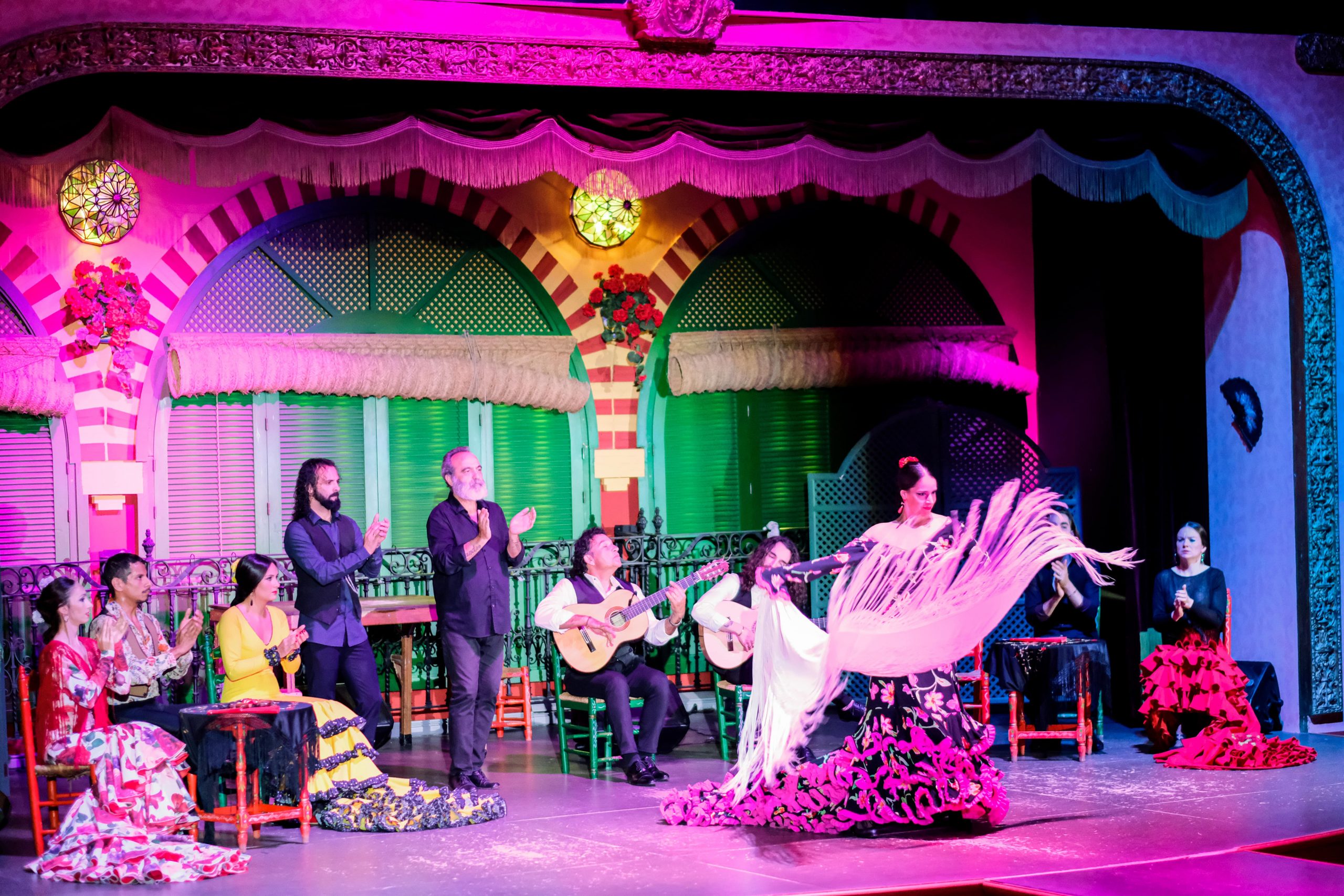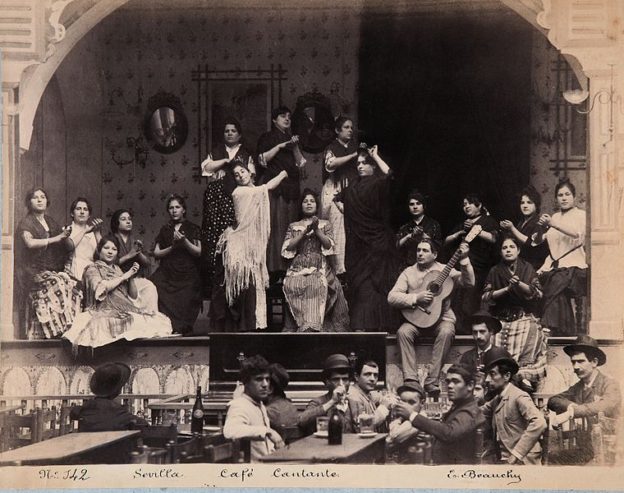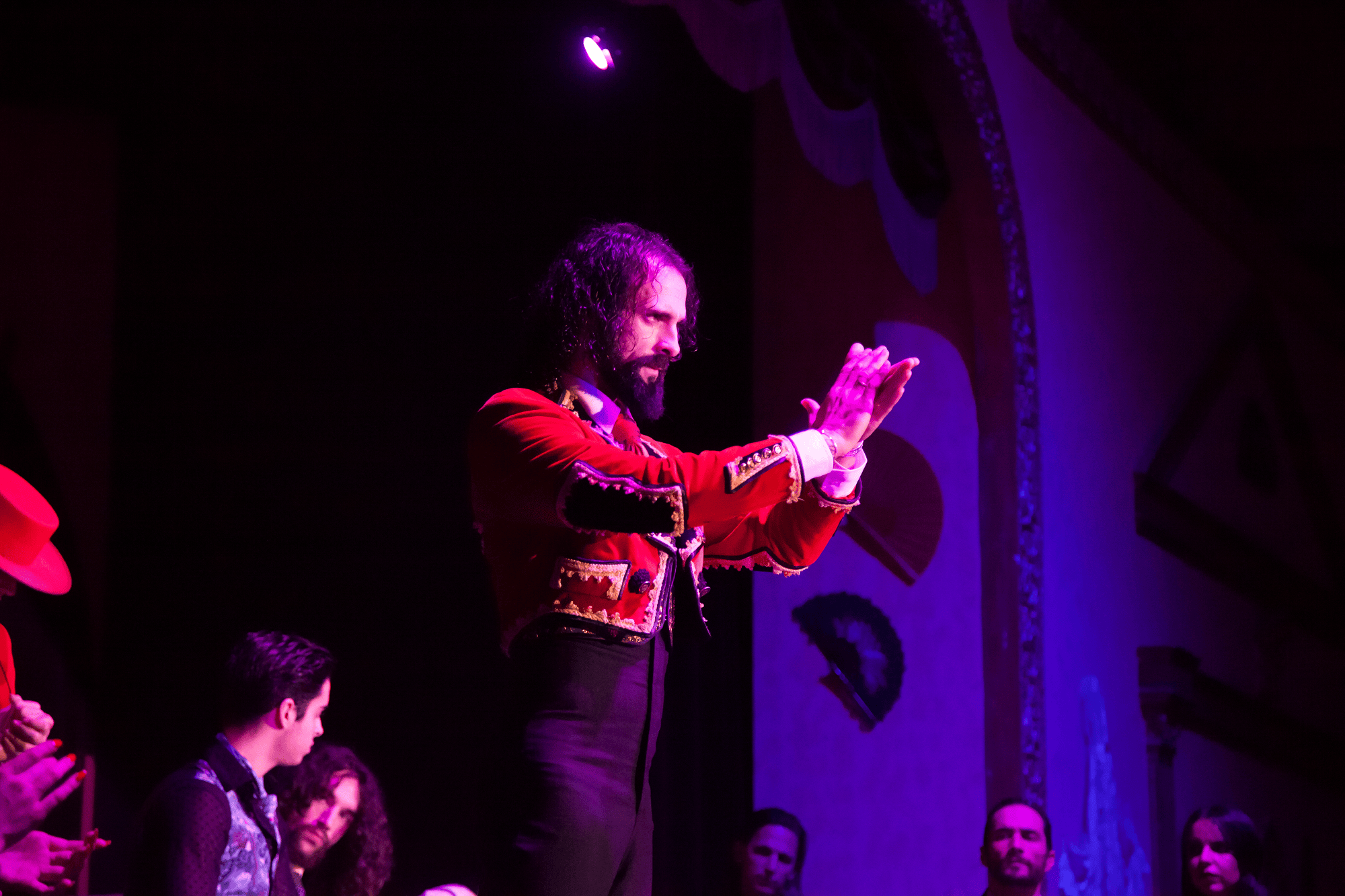
Flamenco is breathed in Seville. Flamenco and Seville maintain an idyll that comes from afar, a connection that is latent in many of the corners of this city, where you breathe, feel and become flamenco. There are many references of flamenco in Seville and we invite you to discover them in this article.
Although there are many discrepancies about the origin of this art, there are those who place it in the province of Cádiz, the truth is that flamenco would not have been what it is today without the influence of Seville and especially of the artists from the well-known neighborhood of Triana .
To get to this Sevillian suburb, the birthplace and benchmark of great figures, you have to cross the Isabel II bridge, better known as the “Triana bridge”. Once there, you can feel the traces of flamenco through most of its streets. Compass, art and feeling will accompany you if you take a walk through the corners of this incredible Seville neighborhood.
In this part of Seville, many referents of flamenco and important singers were born at a time when this art was in full swing. We are talking, for example, of “El Fillo”, one of the pioneers of flamenco singing that marked an era with the seguiriya, one of the oldest and most somber flamenco styles.

The suburb of Triana has also been a refuge for artists who came to the capital of Seville with the aim of carving out a future for themselves. This is the case of “Frasco el Colorao”, a native of Puerto Real (Cádiz) or Antonio Cagancho, who started the flamenco tradition and singer of the Cagancho family.
The flamenco contribution of this Sevillian neighborhood culminates with the creation of an original cante (singing) and dance on this bank of the Guadalquivir, the soleá de Triana, a favorite flamenco style of many singers, especially those who prefer cantes pa’lante, which refer to those in which the singer has all the leading role, acting alone on the tablao or accompanied by a musical instrument, which is usually a guitar.
Triana’s soleá is characterized by guitar falsetas that enrich the melody and accompany the dance. A style forged by great voices like La Serneta or Ramón el Ollero and in the compositions of great artists like La Andonda of Tomatito.
Meanwhile, on the other side of the river, we have to talk about the one considered as the “King of singers” of the time, Silverio Franconetti, promoter of the cafés singers, of which the current tablaos are heirs.
Franconetti has been the main architect of the transition to the so-called “Golden Age of Flamenco”, as he insisted that the style of cante jondo be considered a “major art”. In addition, he knew how to understand flamenco as an art for everyone, taking it out of the privacy of homes and family celebrations and taking it to stages to the delight of the public.

From Seville, it is also Pastora Pavón, better known as “La Niña de los Peines”, who debuted at just eight years old in a booth at the Seville Fair, replacing her brother Tomás, also a singer. Nor can we forget Manolo Caracol, Antonio Mairena or Manuel Vallejo, among others. All of them have played a decisive role in the evolution of flamenco, creating trends and setting style.
As for flamenco styles, we find that, historically, what has had the most presence in Seville have been the already named seguiriyas, tonás, martinetes, tangos and bulerías.
And, of course, we cannot forget the Sevillanas, which, as their name implies, originate from the province of Seville. This dance is perhaps one of the best known and most popular in the world, a style that has undergone a great expansion, since they have a great presence in the different pilgrimages, fairs and other festivities in the country.

Its pioneers were the Toronjo brothers, although the revolution of this genre did not come until the Reyes brothers made changes to their melody, avoiding repeating the lyrics in the four parts that make up a Seville song.
Seville is, in short, a city where flamenco is very present. Its streets serve as a stage for many artists, who offer pedestrians another way of getting closer to this art. In addition, there are many streets, plates, squares and monuments with reference to emblematic artists of this city.
In addition, you will find numerous tablaos, such as El Palacio Andaluz, where the flamenco spirit is kept alive, offering daily shows to the delight of visitors. They are places where the purest form of this art is felt, lived and transmitted.
© 2024 El Palacio Andaluz. All rights reserved.